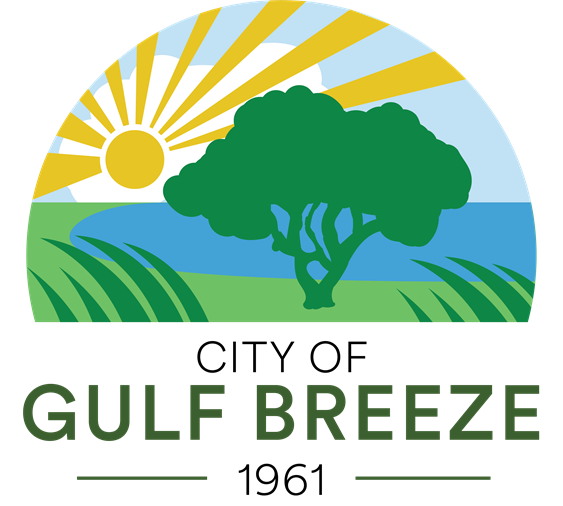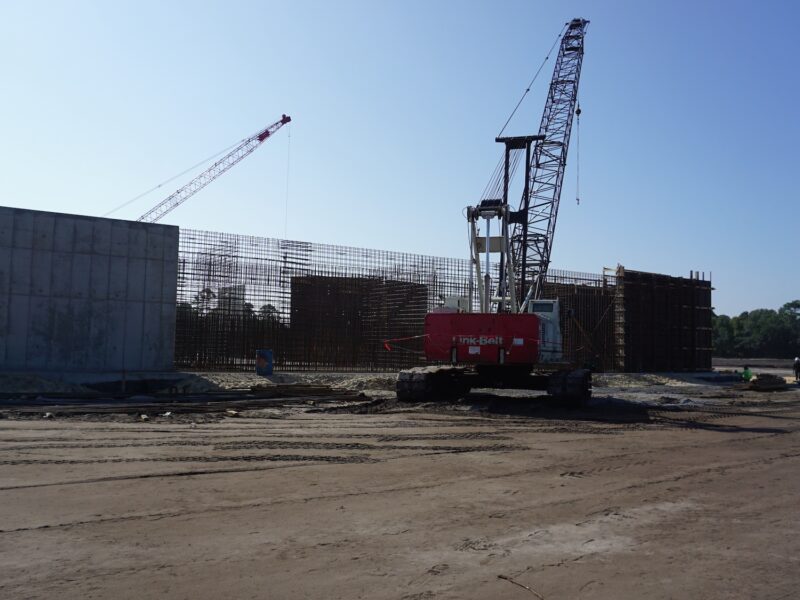City Council Approves New Fee to Fund Tiger Point Wastewater Project
On May 5, Mayor JB Schluter and the City Council held a public meeting to review financing options for the essential $64 million Tiger Point Reclamation and Wastewater Facility project. Following the discussion, the City Council voted to approve a new funding strategy to responsibly cover $32 million—half of the total project cost—through a fair and transparent rate structure. This change will be effective in the July bill.
The approved strategy, known as Alternative #2, introduces a $14 monthly fee per Equivalent Residential Connection (ERC). This new base rate will be paid by 94% of customers, with those using larger meters contributing proportionally more based on their capacity needs.
ERCs are an industry-standard method for measuring how much system capacity a customer requires based on their meter size. The City already uses ERCs to set impact fees and monthly base charges, and engineers rely on these same metrics when designing wastewater facilities. This ensures that customer charges are closely aligned with the capacity allocated for their use.
The Council also approved the option to phase in the new fee over a 2–3 year period, easing the financial impact on residents and businesses.
For additional details, please visit [this page] or contact Utility Customer Service at 850-934-5110.
Expanding for the Future: The Tiger Point Wastewater and Reclamation Facility
The City of Gulf Breeze is committed to building smart, sustainable infrastructure for future generations. One of the most important steps in that journey is the expansion of the Tiger Point Wastewater and Reclamation Facility (WRF)—a long-planned, forward-looking investment that is now 25% complete and on track for a June 2027 completion.
City Council Approves New Financing Strategy
On May 5, Mayor JB Schluter and the City Council held a public meeting to review financing options for this essential $64 million project. Following the discussion, the City Council voted to approve a funding strategy to responsibly cover half of the project’s cost—$32 million in debt—through a fair and transparent rate structure.
The approved strategy, known as Alternative #2, introduces a $14 monthly fee per Equivalent Residential Connection (ERC) to recover this portion of the project cost. This new base rate will be paid by 94% of customers, with larger meters contributing proportionally more.
The ERC method is an industry-standard approach used to measure how much capacity a customer requires based on their meter size. The City already uses ERCs to set impact fees and monthly base charges, and engineers rely on these same metrics when designing wastewater facilities. This ensures a strong connection between what customers pay and the capacity reserved for their use.
The Council also approved an option to phase in the ERC fee over a 2–3 year period to reduce the immediate financial impact on residents and businesses.
Why Not Just Raise Sewer Rates?
Utility experts advising the City emphasized that simply raising sewer rates is a less efficient and less transparent option. This is because most wastewater treatment costs—typically 75–80%—are fixed and tied to infrastructure capacity, not water usage. The ERC-based fee better reflects these fixed costs and is widely regarded as the fairest method for recovering debt service on large capital projects.
Unlike the Gulf Breeze Regional Water System Board’s recommended flat $17 per meter fee, the ERC method adjusts charges based on meter size—making it more equitable for both residential and commercial customers.
Why the Expansion and Upgrades Are Needed
The need for expanded wastewater capacity was first identified in studies dating back to the early 2000s. As Gulf Breeze prepared for future growth, the City secured permits from the Florida Department of Environmental Protection (FDEP) for a new WRF to meet increasing demand.
However, events such as Hurricane Ivan (2004) and the Great Recession delayed construction. In recent years, the City acquired land that enabled a smarter, more cost-effective solution: upgrading the existing facility from 2.0 MGD to 3.5 MGD, eliminating the need for a new site.
Design began in 2018, but the project faced further delays due to rising costs driven by:
- Steel tariffs and supply chain disruptions
- Labor shortages
- Hurricane Michael and Pensacola Bay Bridge reconstruction
- The global COVID-19 pandemic
Despite these challenges, the City remained focused and resilient. In 2019, a temporary capacity increase to 2.2 MGD was considered, but FDEP ultimately required a full upgrade. By 2023, the City relaunched the bidding process with a more refined and cost-efficient design.
How It’s Being Funded
The project is supported by a mix of state, county, and local funding, including:
- $18 million from the State Revolving Fund
- $7 million in RESTORE grant funds from Santa Rosa County
- Local impact fees will pay half the cost overtime
More Than Just Capacity: Supporting a Healthier, More Resilient City
Beyond increasing capacity, the Tiger Point WRF expansion also supports key priorities such as:
- Septic System Elimination – Three years ago, 43% of city homes were on septic systems. Today, that number is 25%, with a goal of 0%.
- Asbestos Concrete Water Main Replacement – 14 miles of outdated asbestos concrete pipes are being phased out.
- Clay Sewer Pipe Repair & Replacement – 11 miles of aging terracotta pipes are being upgraded for better reliability and efficiency.





